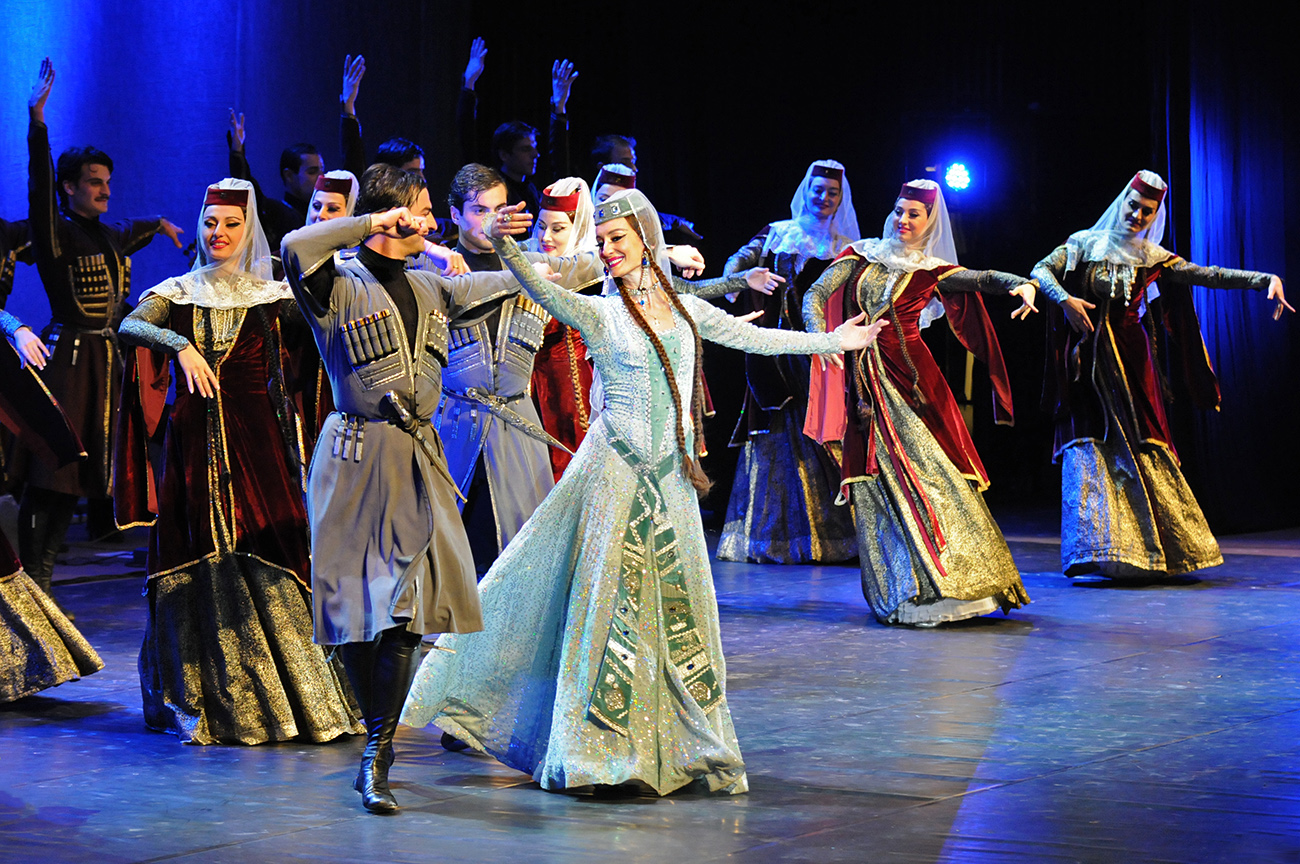On a stone stage in Mestia, two men face each other — blades flashing in their hands, moving with a precision that feels ancient. Sparks fly. The crowd falls silent. Then, a burst of music: fast, wild, impossible to follow. This is not a performance for tourists. This is Georgia dancing as it has for centuries — with fire, with knives, with soul.
🎭 More Than a Dance
In Georgia, folk dance isn’t entertainment. It’s identity. Each movement tells a story — of war and love, of mountains and valleys, of pride that’s never been conquered.
There’s no universal “Georgian dance.” Instead, every region has its own. Acharuli is playful and flirtatious. Khevsuruli is fierce and combative. Kartuli, the national dance, is a silent love poem: the man never touches the woman, and yet everything he does is for her.
You can learn more about Georgia by watching five minutes of these dances than from reading any guidebook.
🔥 Why the Fire and Knives?
Let’s clear one thing up: the knives are real. So is the fire. But they’re not about danger — they’re about legacy.
In the highlands, especially Khevsureti and Svaneti, young men once proved their strength and bravery through dance. The knife dances evolved from ancient martial rituals, where grace and discipline were as valued as power.
The fire? A symbol of purification and courage. You leap over it not to show off — but to show you’re ready for the next chapter. In some regions, it’s tied to coming-of-age ceremonies or weddings.
👘 What They Wear, and Why It Matters
The costumes are not just colorful — they’re coded. A long black coat with bullet holders across the chest (chokha) marks a warrior. Flowing white sleeves and gold embroidery signal nobility. Women wear fitted dresses with veils, moving like wind — soft but steady.
The chokha is still worn proudly today at weddings, performances, even in Parliament. It’s not “folk” in the museum sense — it’s alive, part of the Georgian spirit.
📍 Where to See It
You’ll find professional ensembles in Tbilisi theaters or at national holidays, but the real magic happens at:
- Mountain festivals in regions like Svaneti and Racha
- Village weddings (if you’re lucky enough to be invited)
- Spontaneous celebrations during feast days or wine harvests
Want the insider version? Join a tour where we take you behind the scenes, to meet the dancers, learn the stories, even try a few steps yourself — no fire or knives required (unless you’re feeling brave).
🚶♂️ Before You Go
Watch the dancers’ feet. They don’t just move — they glide, they stomp, they spin on a dime. And then look up at their faces: calm, focused, unshakable.
This is Georgian dance. A centuries-old heartbeat. And it’s still pulsing.




0 Comment